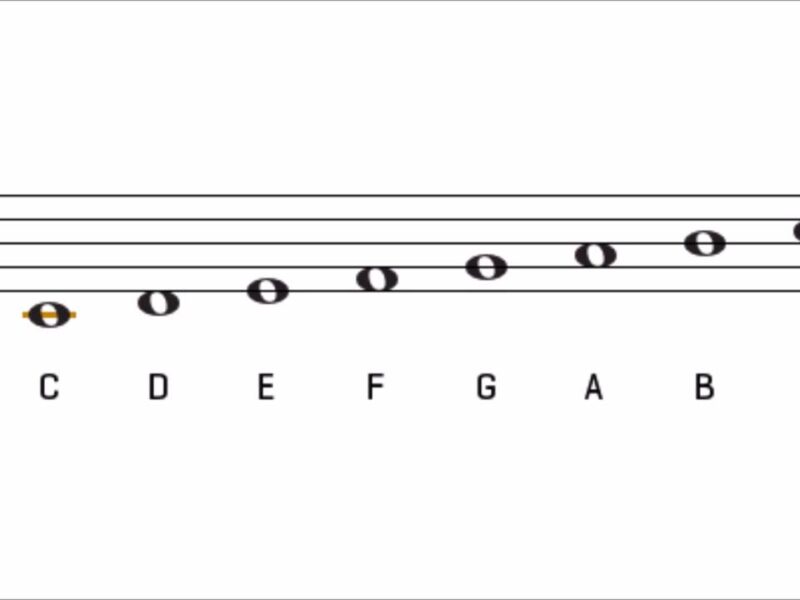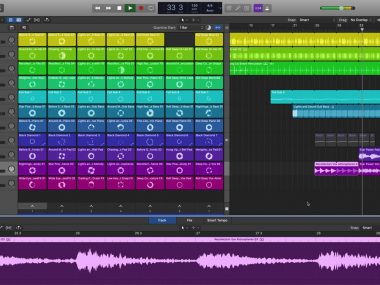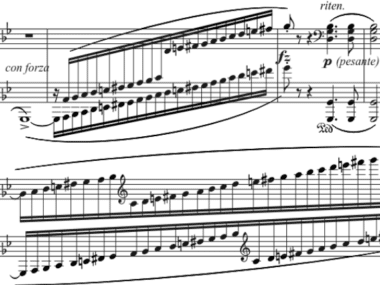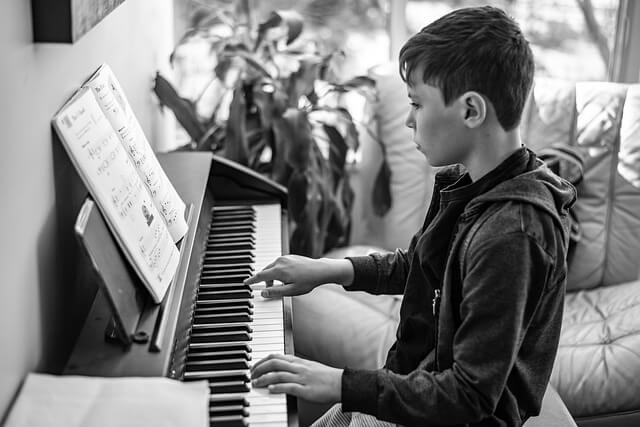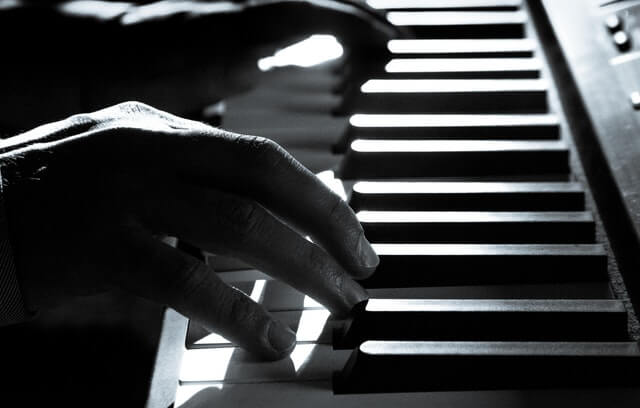*Keyboardkraze now has a nearly 24/7 chat service directly with me should you have any questions regarding keyboard/plugin choices! This is connected directly to me and it is not AI.
Table of Contents
The C Major scale is the first piano scale I ever learned nearly 25 years ago. So if you are new to the piano or simply looking to learn the notes in the C Major scale, you’ve come to the right place.
One of the easiest things to remember with the C major scale consists of only white notes. So, if you ever get confused, all you have to do is find a C note and work your way up or down to the following C note.
C Major Scale Notes
The notes of the C Major scale consist of the following: C,D,E,F,G,A,B,C. There are no sharps or flats in the basic C Major scale.
If you break down the notes in the scale in terms of steps, it will look like this: W,W,H,W,W,W,W, with the W standing for whole and the H standing for half.
Before we get into the proper way to play the C Major scale, let’s grab a quick understanding of the proper fingering.
I suggest playing the C Major scale with your dominant hand first, as you will have a little bit more dexterity in those fingers than your non-dominant hand.
Piano Fingering (Numbers)
In order to understand which fingers should which notes, we have to know which fingers correspond with which numbers.
The finger numbers range from 1-5, as most people have five fingers.
Left-Hand Finger Numbers
Your left-hand starts on your pinky finger, which is the five finger, and it counts down from there, meaning 5,4,3,2,1.
Right-Hand Finger Numbers
The right hand starts with your thumb, the one finger, and counts upwards, 1,2,3,4,5.
Playing The C Major Scale With Your Right Hand
To play the C Major piano scale, place your right hand on C. Your thumb should be the finger that rests on C.
From there, you will follow the notes up one full octave to the next C and then descend back down to the original C note that you played.
The fingering goes as followed:
C(1)
D(2)
E(3)
F(1)
G(2)
A(3)
B(4)
C(5)
You will then descend following this fingering:
C(5)
B(4)
A(3)
G(2)
F(1)
E(3)
D(2)
C(1)
To break this down, you are starting with your thumb on C and ascending, following the finger pattern listed with the corresponding note.
Playing C Major Scale With Left Hand
Place your left hand, starting with your pinky finger on C. You will then follow the fingering below to work your way around the C Major scale.
C(5)
D(4)
E(3)
F(2)
G(1)
A(3)
B(2)
C(1)
You will then want to descend back to C with the following:
C(1)
B(2)
A(3)
G(1)
F(2)
E(3)
D(4)
C(5)
These are the notes that you will follow while descending.
Playing The C Major Scale With Both Hands
It is now time to play C Major with both hands. You will follow the same fingering as above, but be warned, this will be drastically harder at first.
Take your time, start slow, and don’t be afraid to break down certain parts of the scale before doing the full scale.
For example, I would play the first five notes when I was learning, so C,D,E,F,G, and then descend back to C with both hands.
This will build confidence and dexterity before adding on the full scale.
How To Get Better At Playing C Major Scale
Playing scales is one of the essential things pianists can do when looking to build finger independence and dexterity.
Scales also help you learn to play in time. I recommend using a metronome when playing the scales so that you force yourself to play in time.
If you need help choosing a metronome, I put together a list of the best piano metronomes for all budgets here.
You will want to start at a slower beat per minute (BPM) and slowly increase your tempo. I suggest working your way up to play at 144 BPM.
Once you learn how to play the C Major scale with one octave, challenge yourself by learning two octaves and then three.
If you can learn to play scales in 2 octaves in every key, you will begin to make gigantic steps in your journey to playing the piano.
One of the best ways to learning to play the piano is through scales, so you are doing the right thing by learning to play the C Major scale.
Wrapping Up
If you’re wondering how long you should practice scales, I would recommend 10-20 minutes a day for beginners. Now that you understand the C Major scale, you should be able to sit at your piano and play with confidence.

